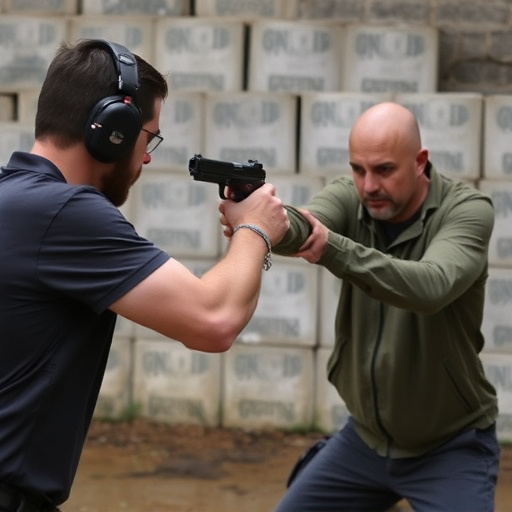Accidental discharges of wholesale stun guns for security companies pose significant risks due to user error, mechanical failures, or unexpected triggers. To mitigate these dangers, security firms must implement comprehensive training programs on safe handling practices and regular maintenance checks. Advanced safety features like safety switches and pulse control systems prevent accidental deployments, ensuring reliable protection. Robust safety protocols, including knowledge of modern trigger mechanisms and automatic shut-off functions, are crucial for enhancing operations, protecting personnel, and adhering to legal requirements for non-lethal force tools. Regular protocol updates are vital to keep pace with technological advancements and industry best practices.
Accidental discharge of stun guns can pose significant risks, making it imperative for security companies to prioritize safety. This article delves into the critical aspect of preventing such incidents by examining the causes and associated dangers. We explore various prevention mechanisms specifically designed for wholesale stun guns, offering a comprehensive guide for security professionals. By implementing robust safety protocols, security companies can ensure the safe handling and deployment of stun guns while mitigating potential risks in the field.
- Understanding Accidental Discharge: Causes and Risks
- Types of Prevention Mechanisms for Wholesale Stun Guns
- Implementing Safety Protocols: A Comprehensive Guide for Security Companies
Understanding Accidental Discharge: Causes and Risks

Accidental discharge, an unintended firing of a stun gun, poses significant risks and is a critical concern for security professionals and law enforcement agencies alike. These incidents can occur due to various factors such as user error, mechanical failures, or unexpected triggers. One of the primary causes is mishandling, where untrained personnel might activate the device without intending to, especially in high-pressure situations. Additionally, design flaws or defects in the weapon’s mechanism can lead to accidental deployments, highlighting the importance of rigorous quality control during manufacturing.
Wholesale stun guns for security companies become a double-edged sword; while they offer powerful tools for self-defense and crowd control, their potential for accidental discharge is a significant liability. Security firms must prioritize comprehensive training programs to educate employees on safe handling practices. Regular maintenance checks can help identify and rectify any mechanical issues, ensuring the reliability of these devices in critical situations.
Types of Prevention Mechanisms for Wholesale Stun Guns

Wholesale stun guns for security companies often come equipped with a variety of prevention mechanisms designed to ensure safe handling and reduce accidental discharge. One common type is the safety switch, which requires the user to activate the device by pressing a button or flipping a lever before it can deliver a shock. This simple yet effective measure helps prevent unintended activations, making it ideal for security professionals who need reliable protection without constant vigilance.
Another crucial mechanism is the built-in pulse control system. Stun guns with this feature emit a controlled electrical pulse that disrupts muscle coordination without causing severe injury. This technology not only enhances safety by minimizing the risk of permanent damage but also ensures compliance with legal requirements for non-lethal force tools, making them suitable for various security applications.
Implementing Safety Protocols: A Comprehensive Guide for Security Companies

Implementing safety protocols is an essential step for security companies aiming to enhance their operations and protect both personnel and clients. One critical aspect often overlooked is accidental discharge prevention, especially when dealing with equipment like wholesale stun guns. These powerful tools require strict guidelines to ensure they are used effectively and safely. A comprehensive training program should be at the heart of any security company’s strategy, educating staff on the proper handling, storage, and deployment of stun guns.
This includes learning about the various safety features incorporated into modern stun devices, such as trigger mechanisms and automatic shut-off functions. By emphasizing responsible use, companies can minimize the risk of accidents and ensure their officers are equipped to handle high-pressure situations while maintaining control over their equipment. Regular reviews and updates to these protocols are also vital, keeping up with technological advancements in stun gun design and industry best practices.
Accidental discharge prevention is paramount for security companies employing wholesale stun guns. By understanding the causes and risks outlined in this article, coupled with the implementation of comprehensive safety protocols, these organizations can significantly minimize potential hazards. The diverse prevention mechanisms available for wholesale stun guns empower security professionals to choose the most suitable options based on their specific needs, ensuring safe and effective deployment. In adopting these measures, security companies can enhance operational efficiency while prioritizing officer and public safety.
